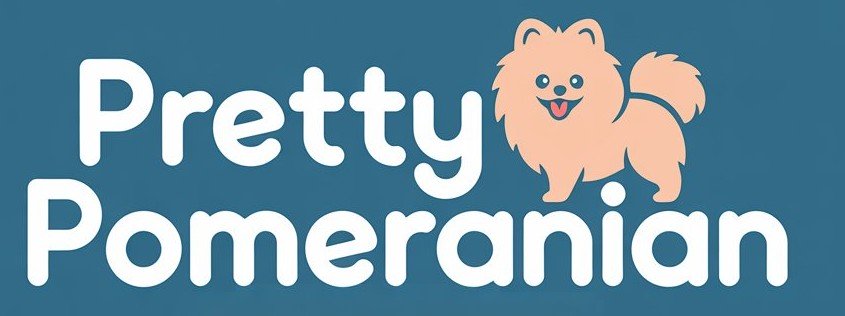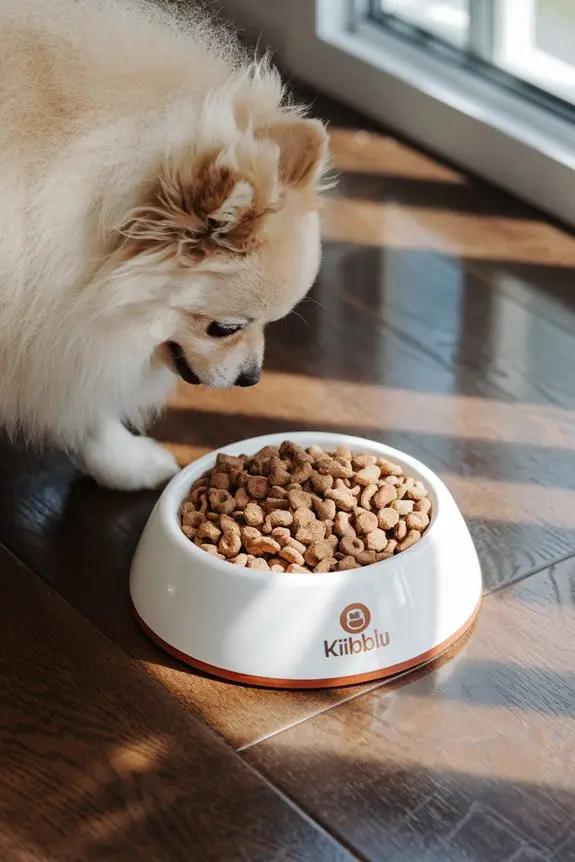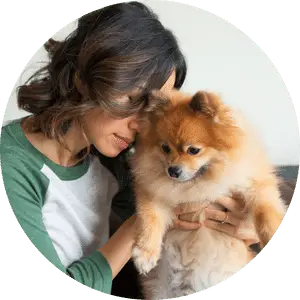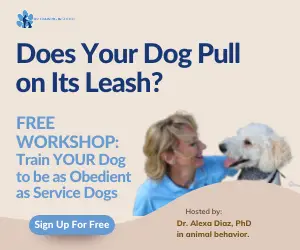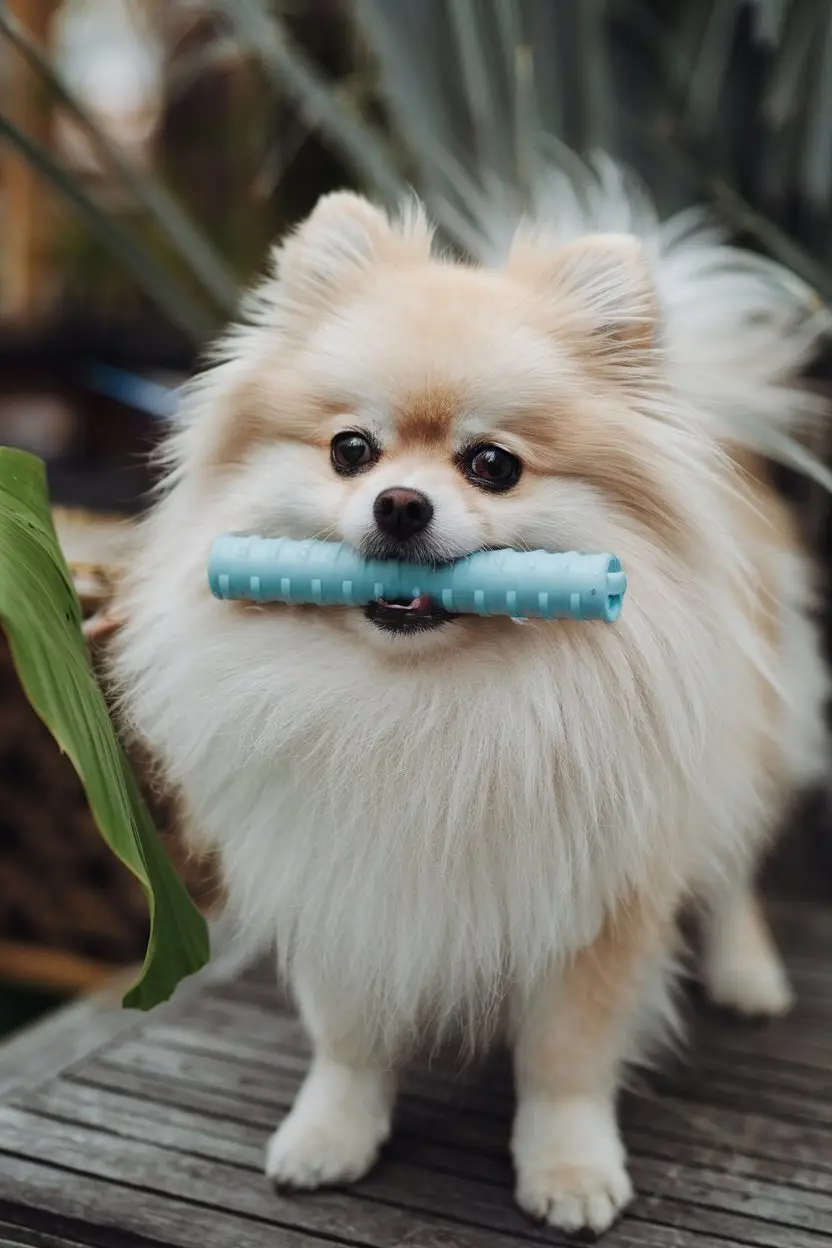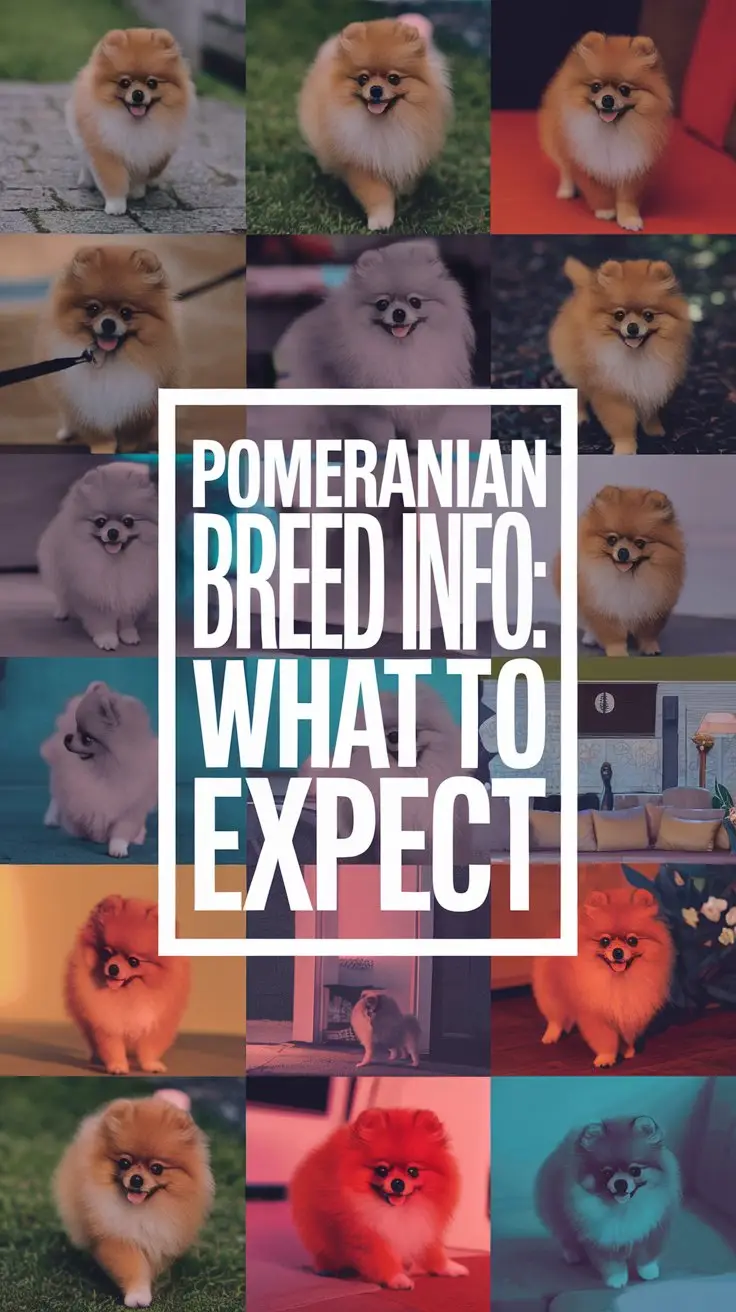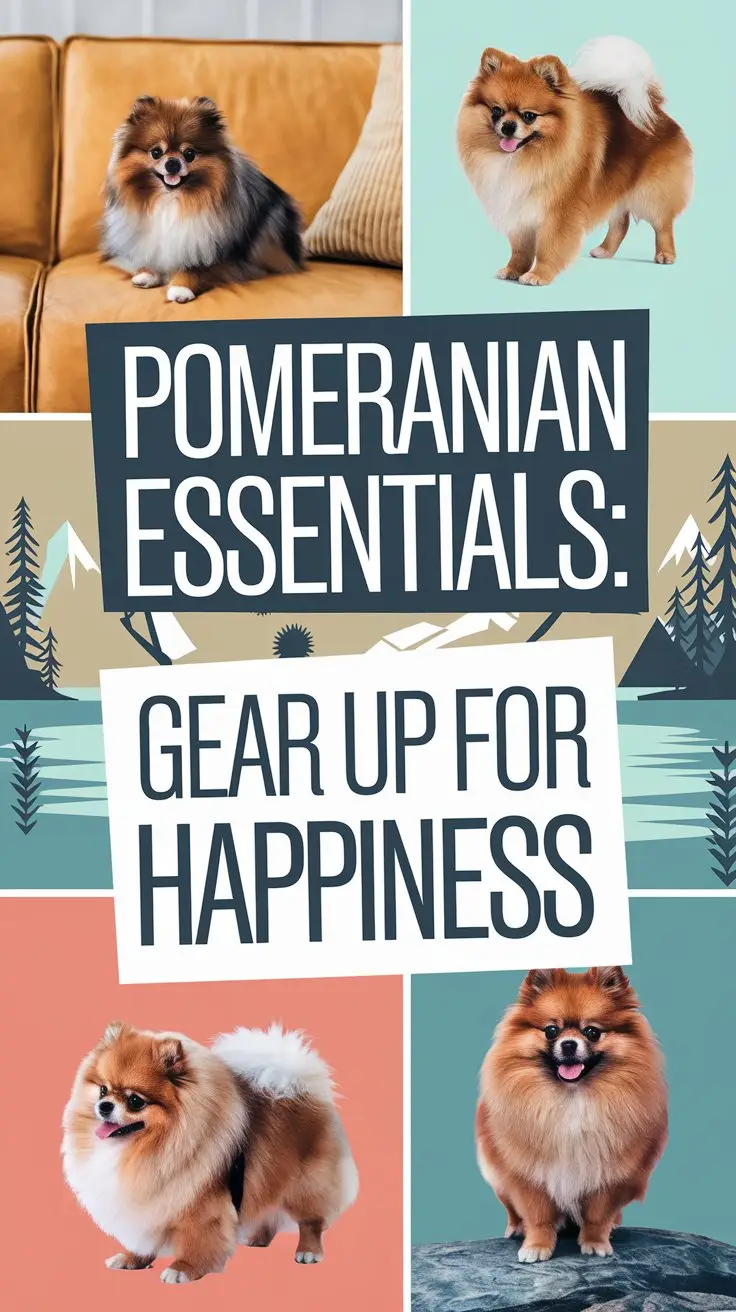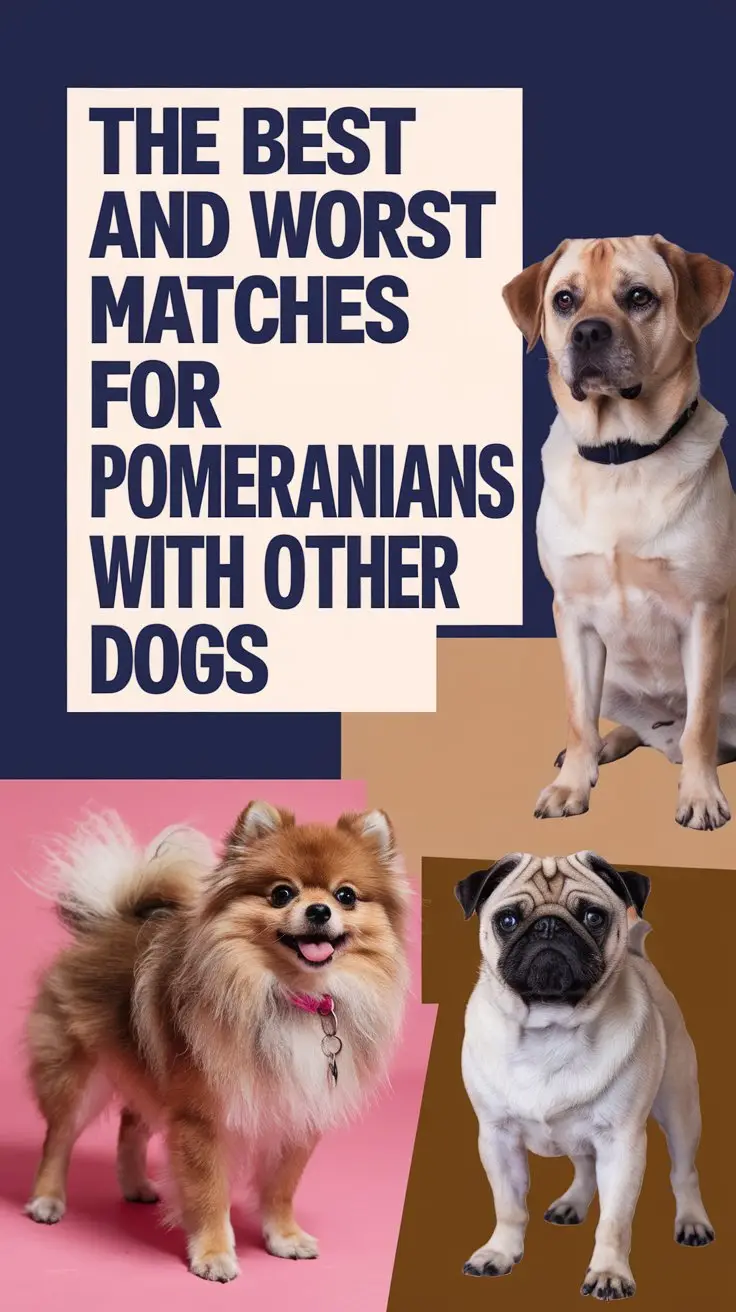Your Pom needs the right food as they grow up to keep them happy and strong. Feed your pup 3-4 meals a day using good small-breed food with 25-30% protein. Once they’re grown up, switch to two meals daily with 18-30% protein.
If your adult Pom weighs around 3 pounds, give them ¾ to 1½ cups of food each day, aiming for about 40-45 calories per pound. Feel free to mix dry food with wet food, and toss in some healthy fruits and veggies as snacks. Just keep an eye out if your pup starts gaining too much weight or has tummy troubles – that’s a sign you might be giving them too much.
Getting to know what works best for your Pom will help you figure out the right amount of food they need.
Understanding Basic Nutritional Needs
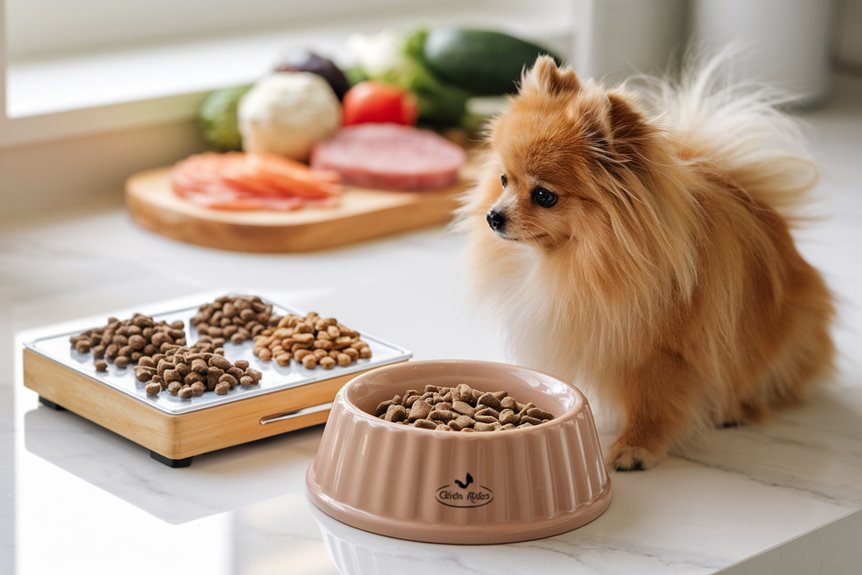
Looking after your Pom’s food needs is pretty simple once you know what changes as they grow up.
When they’re tiny puppies, they need lots of protein (about 25-30%) to help them grow big and strong. Once they’re all grown up, they can do fine with 18-30% protein, and when they get older, around 20% protein works great.
The same goes for fats – your little puppy needs 12-18%, grown-up Poms need 15-20%, and older ones do better with 10-15%. A high-quality commercial diet can make meeting these nutritional requirements much easier.
You’ll start to notice your Pom eating differently as they get older – that’s totally normal! Baby Poms need lots of energy from their food, while adult dogs need you to watch their portions so they don’t get chunky. Older Poms should eat less fatty foods to stay healthy.
Adding fresh vegetables to their meals can provide essential fiber and nutrients while keeping calories low.
No matter how old your Pom is, they’ll always need their vitamins and minerals – especially those omega fatty acids that keep them healthy and happy.
Just think of it like giving them the right fuel for whatever stage of life they’re in!
Proper Portions and Feeding Times
Figuring out your Pom’s portions is super important! For little puppies up to 5 kg, give them around 100g of food daily, broken up into 3-4 meals.
If your pup is about 8 weeks old, try giving them 1-2 tablespoons of wet food multiple times a day, and keep some dry food available too.
For grown-up Poms, you’ll want to give them about 40-45 calories for each pound they weigh.
So if your Pom weighs 3 pounds, they’ll probably need between ¾ to 1½ cups of food every day.
Most adult Poms do great with two meals – one in the morning and one at night.
But if you’ve got a puppy, they’ll need to eat more often – like four times a day.
Just make sure you stick to regular feeding times and keep an eye on your pup’s activity and weight to adjust their food as needed.
High-quality dry food is recommended specifically for small breed puppies.
Food Types and Selection
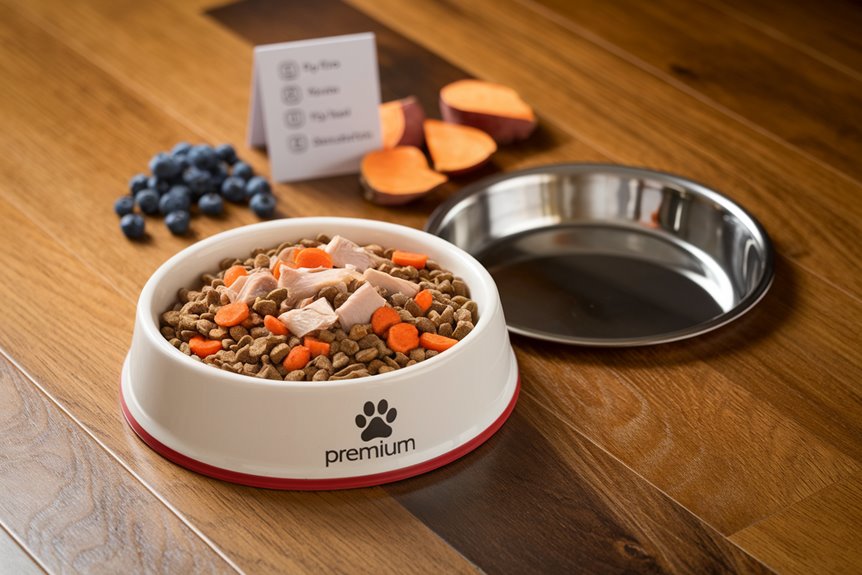
Picking food for your Pom isn’t too complicated once you know what they need. Look for good quality puppy food made just for small breeds – stuff with real proteins like chicken, fish, and eggs in it.
Your little buddy will do great with either wet food or dry kibble, as long as it has the right mix of calcium and phosphorus.
Want to spice up their meals? You can add some regular human foods too! Give them some turkey, chicken, or fish for protein, and toss in veggies like carrots and green beans for extra nutrients.
Fruits are great treats – try apples and berries. You can even add healthy fats with some flaxseeds or peanut butter.
Just skip the red meat and calcium supplements while they’re puppies, and wait until they’re about 18 months old before trying any raw food.
Keep an eye on how they react when you try new foods, and make changes if needed.
Dental chews can help maintain your Pom’s oral health while satisfying their natural urge to chew.
Age-Specific Feeding Requirements
Your Pom’s food needs change big time as they grow up! When they’re tiny puppies, feed them four times a day at 2-3 months old, then drop it to three meals as they get bigger.
Make sure to grab puppy food made just for small breeds – they need all that good stuff packed in there!
When they’re all grown up, stick to feeding them twice a day. The amount depends on how big your pup is – anywhere from ¾ cup to 4½ cups each day.
A good rule of thumb is about 40-45 calories for every pound they weigh.
Once your Pom hits their golden years around 8-9, keep up with the twice-daily meals but switch to food made for older dogs.
You’ll want to look for stuff with extra omega fatty acids and glucosamine to keep their joints happy.
Don’t forget to check in with your vet now and then to make sure you’re giving them the right amount and type of food as they age!
Since Poms have scavenging tendencies, maintaining strict portion control with treats is essential for their health.
Common Feeding Mistakes
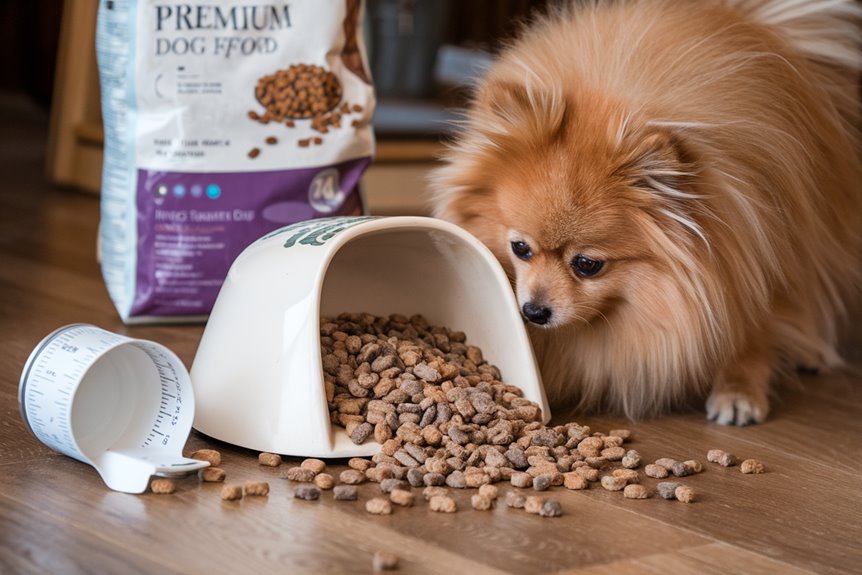
Feeding your Pom wrong can cause some real health issues.
You’ll know you’re giving too much food when you see quick weight gain, throwing up, and your pup getting super lazy. A puffy belly and runny poop are also signs you need to cut back on portions.
Watch out for foods that could make your little buddy sick. Skip the rawhides and dental chews since they’re choking hazards, and don’t give them cherries, plums, or fatty meat scraps.
Just feeding chicken and rice isn’t enough – your Pom needs better nutrition than that. Grab some quality dog food instead and stick to regular feeding times.
Since too much food messes with your Pom’s digestion, make sure to get them checked at the vet regularly to keep their diet on track.
Hypoglycemia symptoms like weakness and shivering can occur if your Pom’s blood sugar drops too low, so maintain consistent meal schedules.
Frequently Asked Questions
Can Pomeranians Eat Eggs, and How Should They Be Prepared?
Eggs are awesome for your little Pom buddy! You can fix them up scrambled, boiled, or fried – just skip the seasonings. Make sure they’re cooked all the way through to keep your furry friend healthy and get all those good nutrients. It’s super simple and totally safe!
Why Does My Pomeranian Hide Food Around the House?
Food hiding in your Pom is totally normal – it’s just their inner wolf coming out! They’re following old survival habits from way back when dogs had to save snacks for later. Your furry friend might do this because they’re not feeling super confident about their meals, need a calm spot to eat, or maybe they’re worried about sharing with other pets in the house.
Should I Feed My Pomeranian Before or After Daily Walks?
You’ll want to give your pup food after those daily walks. Feeding them once you get back home is the smart way to go – it helps avoid any upset stomach or digestion issues while they’re walking around. Just give it a quick 30-45 minute break between the walk and mealtime, and your Pom will be all set!
How Long Can a Pomeranian Go Without Eating?
You don’t want your furry friend to skip meals for longer than 24 hours. Keep an eye out for signs they’re hungry – they might get super lazy or act differently than usual. If your Pom isn’t munching on their food for more than a day, it’s time to ring up your vet and check if their meal timing needs some tweaking.
Why Does My Pomeranian Spin in Circles Before Eating?
Your Pom’s cute little pre-meal dance isn’t weird at all – it’s just part of who they are! Those silly spins before chow time come from old-school wolf behaviors, pure happiness about food, and sometimes they’re just trying to get you to notice their adorable antics.
